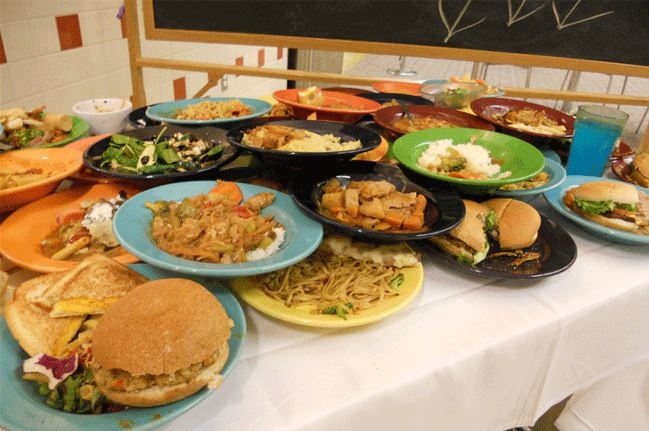
A counselor brought out a bucket containing all of the food leftovers from the plates of the sixth graders, their teachers, naturalists and parent chaperones. It was empty. The crowd cheered: The group had met its goal of zero waste.
The camp made me think about how much food we throw away on a regular basis. Americans waste almost 27 percent of all the food produced in the United States each year. That’s the equivalent of around one pound of food a day for each American.
How can we do better? At the camp, they eat when everyone is hungry, serve small portions and choose items such as pizza and salad that lend themselves to minimal leftovers. What are college campuses doing when faced with the challenge of all-you-can-eat buffets? Actually, quite a lot.
The University of California has been a sustainability leader, working toward an ambitious goal of zero waste by 2020. Take for example UC Davis, home to the nation’s “Coolest School,” an award-winning eco-friendly football stadium, a student farm and robust waste reduction efforts in dining services.
UC Davis Dining Services has reduced plate waste by more than 40 percent in three years, going from 3.6 ounces per person to less than 2 ounces. Danielle Lee, sustainability manager with UC Davis Dining Services, explained some of the key steps that led to the change:
- Trayless dining: Without trays, students only take as much food as they can grab, instead of piling on more than they can consume.
- Try-a-taste program: Students can sample new entrees to see if they like them, instead of getting a big portion of something they may not want to eat.
- Bunless dining: Staff built a tower of leftover buns from hamburgers, turkey burgers and veggie burgers, encouraging students to ask for burgers without buns.
- Waste audits: What’s bigger than a bun tower? The waste buffet spread on top of tables during the waste audits each fall and spring. Students are so surprised by how much waste is generated that they improve their eating habits, Lee said.
- Feedback from staff and students: Dining services meets regularly with staff to review menus, track portions and reduce waste. Also, it seeks student comments and consults with a board of student representatives – among the changes, offering smaller bowls for Mongolian barbecue, limiting leftovers.
With UC Davis dining serving 1.8 million meals a year, these actions add up.
“You’re saving quite a bit of money, energy and resources,” Lee said.
For the food that is uneaten, much of it is composted: 550 tons of organic waste a year, with some turned into renewable energy at a biogas facility that uses UC Davis technology.
Overall, UC Davis diverts almost 75 percent of all its waste – the UC target for this year – from the landfill. To get to the next level, UC Davis will need to improve its recycling of plastics, Lee said.
UC’s efforts to increase sustainability are worth it, said Lee, who began advocating for waste reduction as a UC Davis student, coordinating with campus cafes to compost their coffee grounds.
“I’ve been able to continue the work,” Lee said. “This is my dream job.”
It’s a reminder to think about what you need the next time you dine or shop for groceries. Watch not only what you eat but how much you eat. Be judicious. Serve appropriate portions. Waste not, want not.